Gas War: EPA and DOT Release Final Draft of Fuel Rollback

The U.S. Department of Transportation’s National Highway Traffic Safety Administration (NHTSA) and the Environmental Protection Agency (EPA) released their final version of the Safer Affordable Fuel-Efficient (SAFE) Vehicles Rules on Tuesday. This will establish new targets for corporate average fuel economy (CAFE) and emissions standards for passenger vehicles from the 2021-2026 model years and just in the nick of time. The document had to be completed by April 1st, in order to leave sufficient time for the coming model year.
If you’ve been following the long and arduous process that brought us here, you’ll notice the document has changed slightly from previous drafts. The rollback still enacts the straightening of emission regulations but reels them back from the lofty goals set by the Obama administration. Annual increases in fuel efficiency standards will be set at 1.5 percent through 2026. Previous drafts had the Trump administration freezing efficiency requirements at 2020 levels.
According to the announcement, and EPA head Andrew Wheeler’s own words, the rollback seeks to balance environmentalism with market realities. “Reporting on incomplete information does a genuine disservice to the American people,” Wheeler said in an emoji laden tweet on Monday. “When finalized, the SAFE rule will [increase] US fleet fuel economy, [decrease] air pollution, and make new vehicles more affordable.”
While it was unclear which outlets he was referencing, he later fingered E&E News (an environmental activism/news website) for “misleading Americans with an alternative narrative.” But the initial critiques seem largely negative, if not a bit too swift, for their authors to have possibly read the entire document. The Atlantic immediately came out with a scathing review of the proposal’s presumed impact and the metrics used to qualify the rollback. But that’s hardly new. We also had some niggles with the data the EPA originally used to rationalize its position for the rollback ourselves (especially in regard to vehicle safety), though not enough to view the entire proposal as meritless.
As we’ve noted in the past, one’s general opinion of the SAFE vehicle rules is largely informed by their political/ideological leanings. Advocates seem largely focused on prioritizing existing factory jobs and ensuring Americans have access to the sort of vehicles they already buy en masse in addition to EVs. But opponents say that the rollback risks the environmental well being of the planet and could discourage U.S. advancements in cutting-edge technologies linked to green vehicles.
California and 22 other states plan to challenge the rule. The Golden State has the strictest environmental rules in the country and wants them adopted by others, with many states happy to oblige. It also has taken umbrage with the rollback proposal as it revokes California’s authority to set its own vehicle tailpipe emissions rules. The ensuing legal battles California and supporting states have promised ( or already launched) will undoubtedly cause problems for the automotive industry. But with growing emissions fines being the likely alternative, SAFE may still be preferable to a year of uncertainty. COVID-19 has already guaranteed 2020 will be a rough patch anyway.
Likewise, the practical average fuel economy for vehicles has been mostly stagnant since MY 2014. The University of Michigan previously conducted an assessment of the United States’ sales-weighted fuel economy, showing that the practical efficiency of American cars to be more influenced by fuel pricing and the economy than regulatory measures. While the study only ran between 2008 and 2018, we’re doubtful much has changed over the last two years. Large vehicles are still incredibly popular in the United States and EVs aren’t being purchased at a level sufficient to offset that.
There are other factors to consider, however. Those opposing the rollback say it risks putting over a billion metric tons of carbon dioxide into the atmosphere by 2026 and increases the amount of money Americans spend on fuel. But advocates insist that customers will still have the choice to buy more fuel-efficient vehicles and that charging automakers billions to adhere to manufacturing less-popular vehicles places unnecessary strain on the economy. If you’re interested in some heavy reading, the 1,975-page final rule document is ready to help you burn through one day of social distancing.
Key benefits the EPA and Department of Transportation would like to highlight include a $200 billion reduction in total costs over the lifetimes of vehicles through MY 2029, $100 billion reductions in regulatory costs, $1,400 reduction of the total consumer cost of ownership per new vehicle, more than $1,000 reduction in sales price per new vehicle, and an estimated 2.7 million additional new vehicles sold. It also makes mention of safety improvements believed to come into effect as a result of the changes (e.g. 3,300 fewer crash fatalities, 46,000 fewer hospitalizations, and 397,000 fewer injuries) but we’re still not sold on how those items are being calculated.
Still, the paper is robust and dives into everything with excruciating detail. It even addresses most of the claims that have been made against the rollback during the public comment phase — including the studies the EPA used to make its determination and the impacts to the environment weighted against economic factors. Due to the vast amount of relevant information, it’ll take us a few days to get through all of it. By then, California and environmental groups will probably have issued a collective response while they begin planning their next counter move.
[Image: Siripatv/Shutterstock]

A staunch consumer advocate tracking industry trends and regulation. Before joining TTAC, Matt spent a decade working for marketing and research firms based in NYC. Clients included several of the world’s largest automakers, global tire brands, and aftermarket part suppliers. Dissatisfied with the corporate world and resentful of having to wear suits everyday, he pivoted to writing about cars. Since then, that man has become an ardent supporter of the right-to-repair movement, been interviewed on the auto industry by national radio broadcasts, driven more rental cars than anyone ever should, participated in amateur rallying events, and received the requisite minimum training as sanctioned by the SCCA. Handy with a wrench, Matt grew up surrounded by Detroit auto workers and managed to get a pizza delivery job before he was legally eligible. He later found himself driving box trucks through Manhattan, guaranteeing future sympathy for actual truckers. He continues to conduct research pertaining to the automotive sector as an independent contractor and has since moved back to his native Michigan, closer to where the cars are born. A contrarian, Matt claims to prefer understeer — stating that front and all-wheel drive vehicles cater best to his driving style.
More by Matt Posky
Latest Car Reviews
Read moreLatest Product Reviews
Read moreRecent Comments
- Redapple2 I gave up on Honda. My 09 Accord Vs my 03. The 09s- V 6 had a slight shudder when deactivating cylinders. And the 09 did not have the 03 's electro luminescent gages. And the 09 had the most uncomfortable seats. My brother bought his 3rd and last Honda CRV. Brutal seats after 25 minutes. NOW, We are forever Toyota, Lexus, Subaru people now despite HAVING ACCESS TO gm EMPLOYEE DISCOUNT. Despite having access to the gm employee discount. Man, that is a massive statement. Wow that s bad - Under no circumstances will I have that govna crap.
- Redapple2 Front tag obscured. Rear tag - clear and sharp. Huh?
- Redapple2 I can state what NOT to buy. HK. High theft. Insurance. Unrefined NVH. Rapidly degrading interiors. HK? No way !
- Luke42 Serious answer:Now that I DD an EV, buying an EV to replace my wife’s Honda Civic is in the queue. My wife likes her Honda, she likes Apple CarPlay, and she can’t stand Elon Musk - so Tesla starts the competition with two demerit-points and Honda starts the competition with one merit-point.The Honda Prologue looked like a great candidate until Honda announced that the partnership with GM was a one-off thing and that their future EVs would be designed in-house.Now I’m more inclined toward the Blazer EV, the vehicle on which the Prologue is based. The Blazer EV and the Ultium platform won’t be orphaned by GM any time soon. But then I have to convince my wife she would like it better than her Honda Civic, and that’s a heavy lift because she doesn’t have any reason to be dissatisfied with her current car (I take care of all of the ICE-hassles for her).Since my wife’s Honda Civic is holding up well, since she likes the car, and since I take care of most of the drawbacks of drawbacks of ICE ownership for her, there’s no urgency to replace this vehicle.Honestly, if a paid-off Honda Civic is my wife’s automotive hill to die on, that’s a pretty good place to be - even though I personally have to continue dealing the hassles and expenses of ICE ownership on her behalf.My plan is simply to wait-and-see what Honda does next. Maybe they’ll introduce the perfect EV for her one day, and I’ll just go buy it.
- 2ACL I have a soft spot for high-performance, shark-nosed Lancers (I considered the less-potent Ralliart during the period in which I eventually selected my first TL SH-AWD), but it's can be challenging to find a specimen that doesn't exhibit signs of abuse, and while most of the components are sufficiently universal in their function to service without manufacturer support, the SST isn't one of them. The shops that specialize in it are familiar with the failure as described by the seller and thus might be able to fix this one at a substantial savings to replacement. There's only a handful of them in the nation, however. A salvaged unit is another option, but the usual risks are magnified by similar logistical challenges to trying to save the original.I hope this is a case of the seller overvaluing the Evo market rather than still owing or having put the mods on credit. Because the best offer won't be anywhere near the current listing.

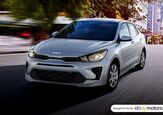
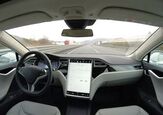














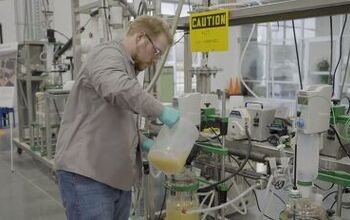


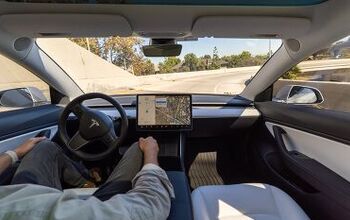
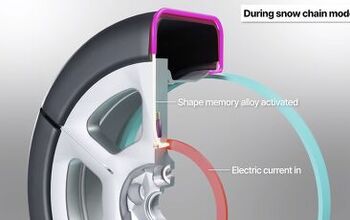
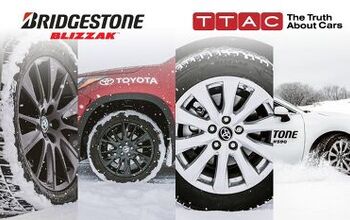
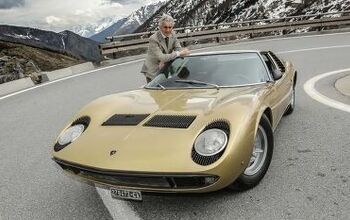
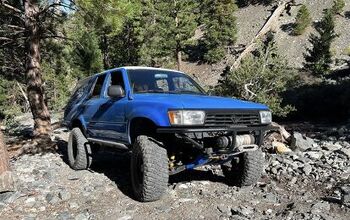




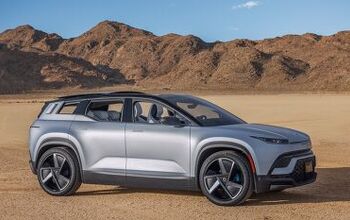
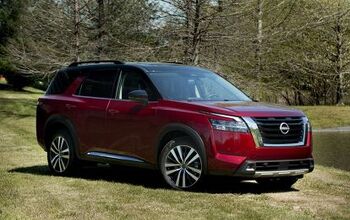
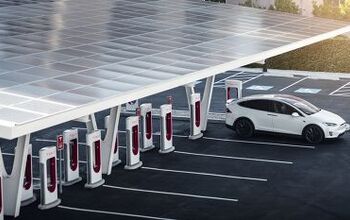


Comments
Join the conversation
Corporate Average Fuel Economy (CAFE) has always been a suboptimal way to accomplish the stated intent of CAFE. (War on Drugs level of ineffectiveness.)
SAFE does not go NEARLY far enough. E-N-D "CAFE". Permanently. Roll back emissions standards to ~1990s levels. In no instance should they be more strict than whatever was in place in 2006. No more DEF for Diesels!